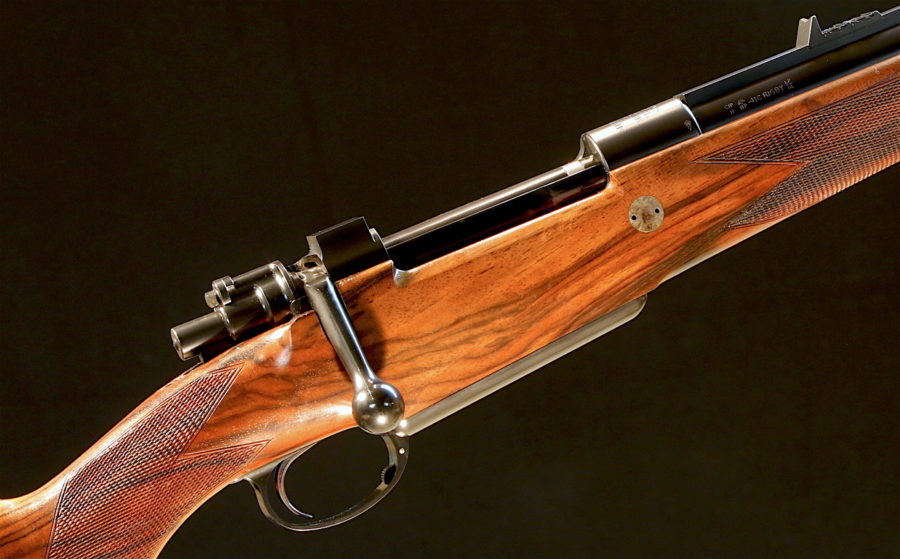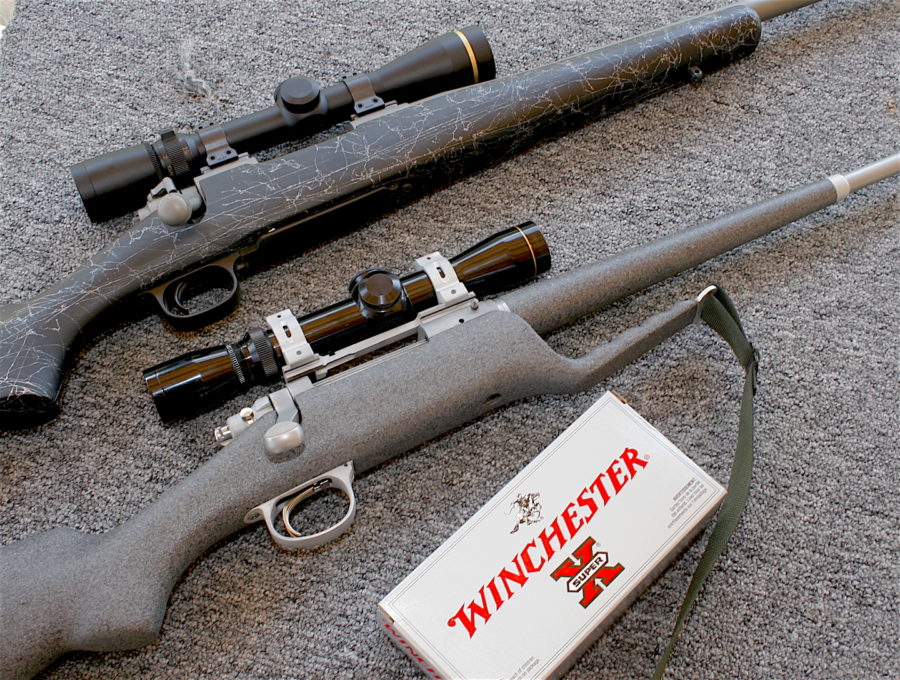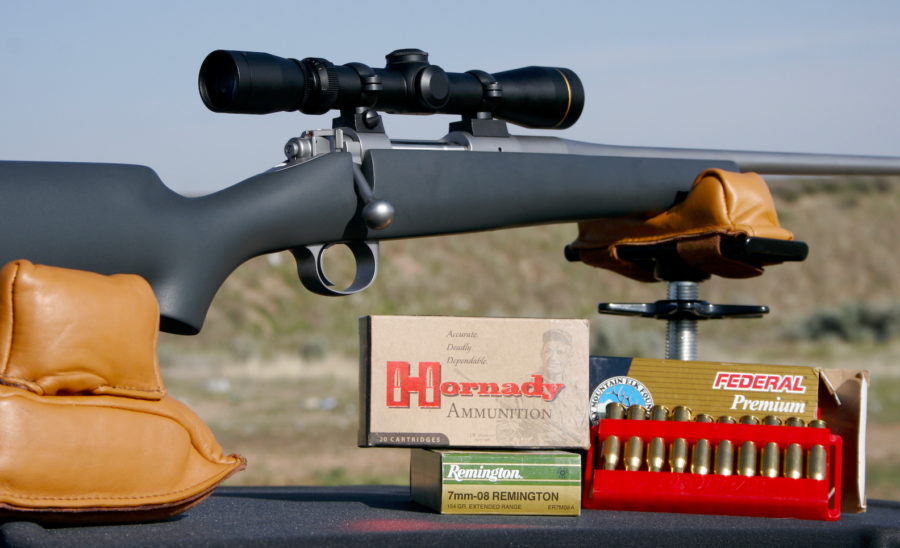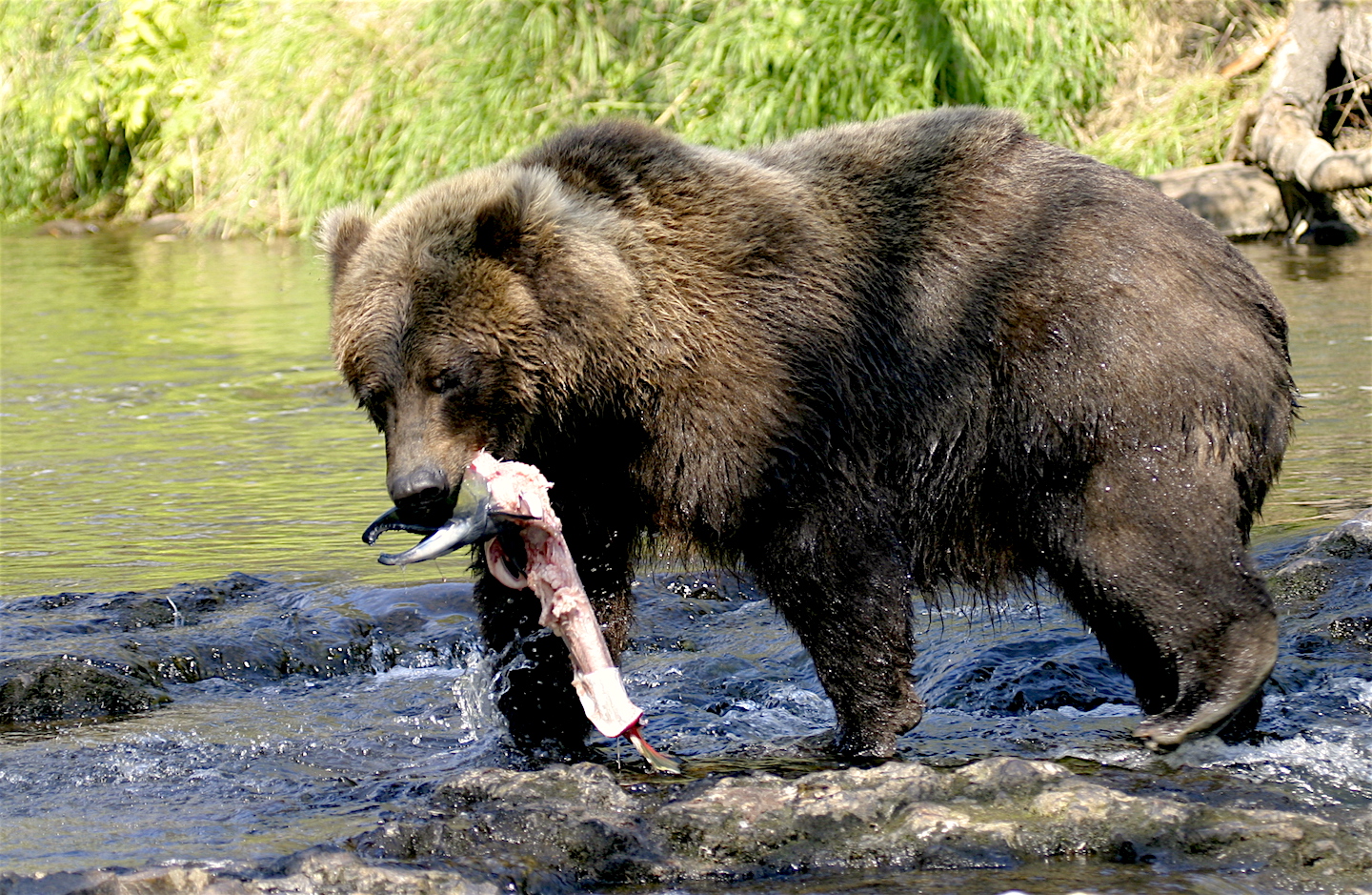In our last post we selected the .300 Winchester Magnum cartridge as the best all-round compromise for handling everything from brown bears to blacktails in our perfect Alaska rifle. Now let’s select the actual rifle for igniting those cartridges.
THE IDEAL ACTION FOR THE PERFECT ALASKA RIFLE
Forget levers, pumps, falling blocks, break actions, and autoloaders. The Mauser-style, controlled-round-feed bolt-action is our winner, hands down. It’s the strongest, toughest, fastest, most rugged, most reliable action. It can be most easily tuned and bedded for maximum accuracy. Triggers can be easily adjusted or replaced.
Brand options include original Mauser M98s and modern builds of the same controlled-round-feed mechanism. Examples include the Montana 1999, the Winchester M70, Ruger Hawkeye/M77, and various Kimbers. Take your pick.
I’d go with the Kimber for minimal weight (no small consideration in Alaska!). The Montana 1999 is arguably the perfect melding of Mauser and Winchester features, but the M70 itself is a revered and long-proven CRF action. Any of these will do nicely. I’d get mine in stainless steel or titanium for rust resistance and long-term viability. I’ve had matte-blued steel rifles turn rust red in a single day climbing the Chugach Range. Weatherproof components are an important consideration in any tools destined for life in the Last Frontier.
BARRELING TOWARD THE PERFECT ALASKA RIFLE
Barrel length is a tough choice. You want mass for accuracy and length for maximum velocity; neither is optimum for convenience. You’re going to be dragging this rifle in and out of boats, ATVs, horse scabbards, and bush planes. You’re going to pull it through alder thickets and spruce woods, and as you do you’re going to cuss any 24-inch barrel, particularly when it catches on an alder branch as you swing it to cover a charging bear or moose.
As a compromise between brush convenience and long-range, open-country performance, I could compromise with a 22-inch barrel, but convenience and maneuverability in brush suggests an even handier 20-inch barrel.

The original, battle-tested Mauser M98 CRF action is one of the toughest, most reliable bolt actions, but this full-size magnum is excessively heavy for an all-round Alaska rifle. And it’s not stainless steel. And that walnut stock . . .
I can hear some heads shaking already. A 20-inch barrel in .300 Win. Mag? That’s going to be loud! That’s going to sacrifice too much velocity! Well, yes and no. Yes, it’ll be painfully loud, but to my ears so is a 24-inch barrel. I’ll shove in ear plugs when I have time, suffer when I don’t. As for the velocity loss, figure an average of 30 fps per inch. This suggests our 3,100 fps loads will instead depart at 2,980 fps. How much ballistic sacrifice is that? An inch more drop at 400 yards, 189 f-p less energy, a half-inch more wind drift. Big deal. Besides, with today’s laser range finders, you can easily compensate for long-range drop.
So, 20-inch barrel it is. Get it in a standard sporter contour and you shave a few ounces, too. Of course, it’ll be stainless steel. That not only protects the surface, but, more importantly, the bore. It is too easy to overlook the dark recesses of a rifle’s bore in damp conditions, yet that is the most critical surface. Rusted rifling can ruin accuracy quickly.
BEDDING THE PERFECT ALASKA RIFLE
One of the finer attributes of bolt-action rifles is their one-piece stocks. These add stiffness and options for bedding the barreled action. To tweak accuracy you can full-length bed the barrel, which adds rigidity. Some barrels shoot more consistently and precisely with free-floating barrels or just a touch of pressure near the end of the stock. You can manipulate all of this with sandpaper and epoxy bedding.
Before doing that, however, buy your rifle with the lightest weather-resistant stock you can find. I love highly figured walnut gunstocks but must admit hand-laid synthetics are a more durable option in rough, wet country. This doesn’t mean all synthetic stocks are wonderful. The cheap, molded plastic stocks on most of today’s inexpensive rifles can warp, crack, and even shatter in extreme cold.
The best synthetics are some combination of aramid fibers, fiberglass, Kevlar, and carbon. They may include aluminum bedding pillars or more extensive blocks, all designed for consistent bedding pressure between stock and action. Choose your favorite, but pay attention to weight. The stock is an easy place to shave ounces from any rifle you’ll be chauffeuring across bogs, swamps, tundra, and mountains. Rifles, Inc. builds tough synthetic stocks weighing as little as 11 ounces. Other synthetics and most walnut stocks weigh closer to 2½ pounds.

The 5-pound custom Kifaru Rambling Rifle in .300 WSM (bottom, out of production) could be the ultimate mountain rifle, but its push-feed Remington action might not be ideal in bear country. Winchester’s stainless synthetic M70 is a better, if heavier, option . . . if its 24-inch barrel is cut down to 20 inches and open sights are added.
AIMING THE PERFECT ALASKA RIFLE
As you shop for your perfect Alaska rifle, you’ll notice one glaring omission: metallic sights. Scopes have become so universal, durable, and dependable that most rifle makers have quit putting open sights on their rifles. In a recreational rifle this isn’t much of a problem, but on a rough-and-tumble, day-to-day working rifle that might not get a whiff of a gunshop for weeks on end, an open sight can save a hunt, if not a life.
Big scopes do not make bear stopping rifles any handier, but if that scope is fitted to the rifle with quick-release mounts, you can quickly remove it in bear country, then reattach it in open country. This trick also prevents unnecessary scope abuse during fishing expeditions and berry-picking excursions when your rifle tags along strictly as protection.
Among CRF-action rifles, few offer open sights combined with 20-inch barrels, a .300 Win. Mag. chambering, and stiff synthetic stocks. Winchester comes close with its Extreme Weather M70, but you’ll have to cut back the 24-inch barrel and add open sights. Ditto Kimber’s Montana. Montana Rifle Company offers a similar 24-inch .300 stainless synthetic in its Extreme X2 rifle, but their custom shop will modify to your tastes. Rifles, Inc. builds a 5¾-pound, stainless synthetic rifle around the M70 action called the Lightweight 70. Have them build it with a 20-inch barrel and open sights and you may have found perfection.
Ruger makes what I consider a near-perfect Alaska rifle in its Guide Gun. This all-stainless CRF comes with a 20-inch barrel chambered in .300 Win. Mag. and fitted with adjustable open sights and even a detachable muzzle brake. Instead of a synthetic stock, however, this handy barreled action is set in a laminated wood stock. This is fine for weather-resistant durability, but you pay the price in weight. Despite its short barrel, the Guide Gun weighs 8 pounds before you mount a scope.
FIND A GUNSMITH TO CREATE YOUR PERFECT ALASKA RIFLE
In short, you probably can’t buy the perfect Alaska Rifle off the shelf, so find a good gunsmith. You’ll probably need to cut down the barrel, add open sights, or change out the stock. If you’re as tough and durable as Alaska itself, just buy the Ruger Guide Gun and start sweating.

Kimber’s CRF actions are downsized to minimize weight and bulk, making them prime candidates for the all-round Alaska rifle, but probably not in 7mm-08 Rem. You’ll need to cut down the barrel and add open sights.
ONE FINAL THOUGHT ON THE PERFECT ALASKA RIFLE
I’ve chosen the .300 Win. Mag. both for its performance and its popularity. You can find .300 Win. Mag. ammo wth a wide selection of bullets in most shops that sell ammo. However, it you handload or don’t mind stocking up, the .300 WSM is a great option. Because it cycles through short actions, it can be built in lighter, more compact rifles like Kimber’s 6-pound, 3-ounce Montana. That’s 10 ounces less than the .300 Win. Mag. Montana. If 10 ounces doesn’t seem like much, you’re either a relentless athlete in your 20s or you haven’t backpack hunted many Alaska mountains yet.
For more from Ron Spomer, check out his website, ronspomeroutdoors.com, and be sure to subscribe to Sporting Classics for his rifles column and features.

